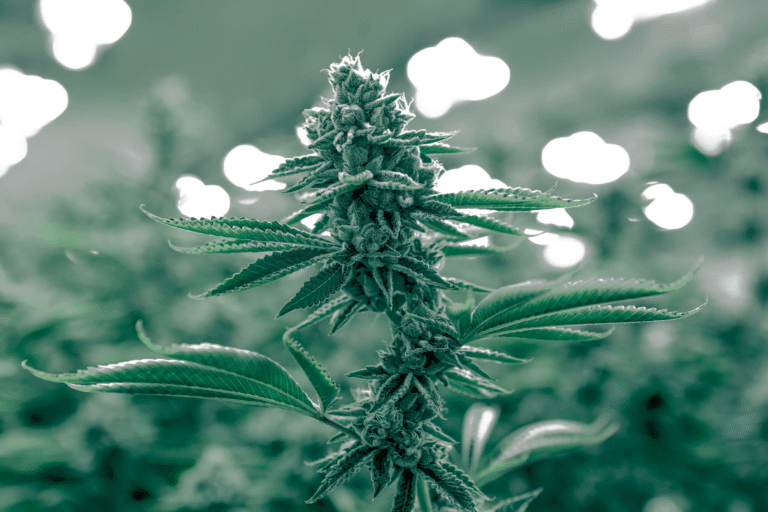Autoflowering cannabis strains have gained immense popularity among growers for their quick growth cycle and ease of cultivation. These strains, often derived from a combination of cannabis ruderalis genetics, offer unique advantages. However, one critical aspect that can significantly impact your autoflowering strains’ final yield and potency is the timing of the harvest. In this article, we will explore the factors that determine the best time to harvest autoflowering cannabis and provide valuable insights to help you make the most of your crop.
Understanding Autoflowering Cannabis
Before delving into the timing of the harvest, let’s briefly understand what sets autoflowering cannabis apart. Unlike traditional photoperiod strains, autoflowers switch from the vegetative stage to flowering automatically, without relying on light cycles. This means they have a shorter growth cycle, are typically smaller in size, and are well-suited for growers with limited space or time.
Why You to Choose Autoflower Cannabis
If you’re considering growing autoflowering cannabis, it’s essential to start with the right autoflowering feminized seeds. They are highly recommended for several reasons:
- Predictable Growth: Autoflower feminized seeds guarantee that your plants will be female, eliminating the need to identify and remove male plants, which can cross-pollinate and reduce the quality of your harvest.
- Efficiency: With feminized seeds, you can maximize your garden’s efficiency by focusing solely on cultivating the productive female plants.
- Consistency: Autoflower feminized seeds provide uniformity in your crop, ensuring that all plants are of the same gender and have similar growth patterns.
- Higher Yields: Eliminating male plants means you can allocate more resources and space to growing high-quality female plants, resulting in larger yields.
Factors Affecting Harvest Time
Determining the ideal harvest time for autoflowering strains involves considering several key factors:
- Genetics and Strain-Specific Traits:
- Different autoflowering strains have varying growth patterns and maturity rates.
- Research the specific characteristics of your chosen strain to understand its expected harvest window.
- Trichome Development and Maturity:
- Trichomes are the tiny, resinous structures on the buds responsible for producing cannabinoids like THC.
- Harvest timing depends heavily on the trichome’s development stage.
- Pistil Color and Development:
- Pistils, or hairs, on the buds change color as they age.
- Monitoring the pistil color can provide clues about the maturity of the plant.
- Environmental Factors:
- Light, temperature, and humidity levels in your grow environment can affect the growth rate of autoflowering cannabis.
- Keep these factors stable to promote consistent growth.
Trichome Examination
To determine the best time to harvest, you’ll want to closely examine the trichomes on your autoflowering cannabis plants. These microscopic structures go through three primary stages:
- Clear Trichomes: At this stage, trichomes are mostly transparent and contain fewer cannabinoids. Harvesting at this point results in a less potent product.
- Cloudy Trichomes: Trichomes become cloudy or milky as they mature, indicating peak THC production. This is often considered the ideal time to harvest for a balanced effect.
- Amber Trichomes: As trichomes turn amber or brown, THC levels begin to degrade, but CBD levels may increase. Harvesting at this stage provides a more relaxing and less psychoactive experience.
Checking Pistil Color
Another visual cue for harvest timing is the color of the pistils. Initially, pistils are white, but they gradually change to brown or amber as the plant matures. For a more energetic and euphoric high, harvest when the pistils are mostly white. If you prefer a more relaxed, sedative effect, wait until the pistils have turned brown or amber.
Timing Your Harvest
The ideal harvest time often lies in the overlap between trichome development and pistil color change. Aim to harvest when trichomes are mostly cloudy, and 10-20% have turned amber. This provides a balanced high with a mix of THC and CBD.
Remember that the timing may vary depending on the strain, so closely monitoring your plants and using trichome and pistil color as your guide will yield the best results.
Tools and Equipment for Harvest
To ensure a successful harvest, you’ll need specific tools and equipment:
- Trimming scissors or shears
- Gloves
- Drying racks or hangers
- Curing jars
Harvesting Process
- Begin by carefully cutting branches with mature buds.
- Trim away excess leaves and fan leaves using trimming scissors.
- Hang the trimmed branches to dry in a dark, well-ventilated space.
- Once dry, place the buds in curing jars to further develop their flavor and aroma.
Drying and Curing
Proper drying and curing are crucial for enhancing the quality of your autoflowering cannabis buds. During the drying process, aim for a slow, controlled drying period to prevent mold and preserve terpenes. After drying, place the buds in curing jars, opening them regularly to release excess moisture and develop a smooth, potent product.
Conclusion
Knowing when to harvest your autoflowering plants can make all the difference in the quality and potency of your cannabis crop. By carefully observing trichomes and pistil color, and understanding the unique traits of your chosen strain, you can optimize your harvest for the desired effects. Whether you’re growing for recreational or medicinal use, precise timing will ensure you get the most out of your autoflowering cannabis plants. Happy harvesting!


